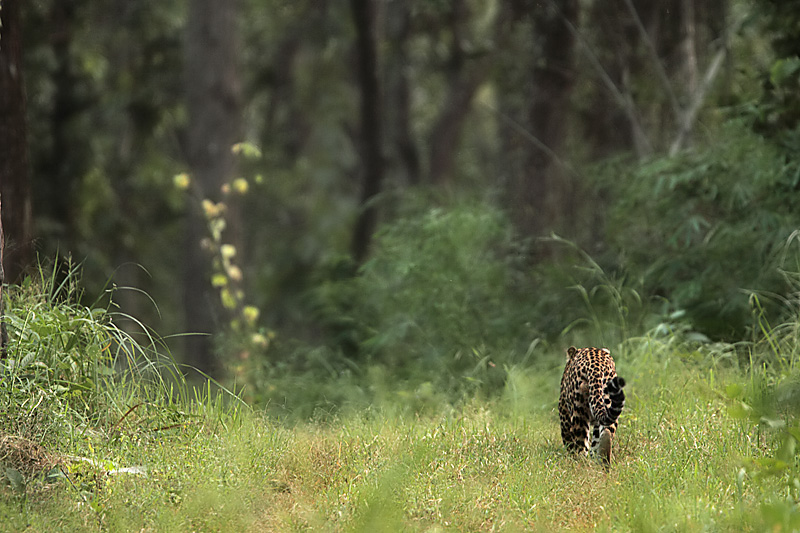India has lost no less than 62 leopards in the first 50 days of 2010—more than a leopard a day, according to records available with the Wildlife Protection Society of India. Given that within the same period we have lost eight tigers, the Panthera pardus may well beat the tiger in the extinction race. The killings are mainly concentrated in Uttarakhand: from the dawn of the new year to February 20, 26 of these big cats met their end, a threefold increase from 2008 when the state lost nine leopards in the same duration. The killings are brutal, incessant —in just one day, February 12 a leopard was found ensnared with its limbs chopped off – the claws apparently fetch good money as good luck charms –near Dehradun. Another was found hanging from a tree entangled in a metal wire noose in Jhajhra forest range, also near the state capital. The slaughter is across the country, in Uttar Pradesh, a leopard was beaten to death by villagers near Bahraich on February 21, in Yusmarg, in J & K, the animal was found dead in a trap on January 21, the handiwork of poachers.
“It’s a war out there,” declares Belinda Wright, WPSI. And the leopard is the loser. From 235 leopard deaths in the country in 2008, the mortality has escalated to 291 in the consequent year to over 60 in just seven weeks in 2010. Ironically, such large mortality seems to indicate a fairly substantial population of leopards, but points out a senior forest official in Uttarakhand, “it cannot survive this large offtake.” Also, it may well remembered that the leopard’s habitat has declined drastically, forcing it out in the open, where it is more noticeable—and vulnerable. The leopard is condemned in every which way—poached for its skin and bones, the former to cater to demands of fashion, and the latter a substitute for tiger bones; it is mowed down by trains and vehicles like the young male who was crushed under a speeding vehicle on January 21 at Lal Kuan near Haldwani in Uttarakhand. The leopard’s nemesis, though, is conflict. Not a top predator, it lives on the fringes of the forest, preying on small game like barking deer, cheetal, langur. With its habitat degraded, and natural prey poached–the leopard has been forced to set up camp near human habitation, and to survive on dogs, goats, cattle—and occasionally man. When cats kill, there is outrage and people beat, burn, bludgeon the leopard to death—sometimes in revenge, or simply for wandering into human habitation. As the table shows, leopards killed by villagers is also on the increase.
Unfortunately, the leopard enjoys no political patronage and public opinion has not rallied in its favour –they are perceived as inconvenient, and a threat-and are simply gotten rid off. Experts opine that the problem animal must be removed to gain support for the others—however, there is no policy to deal with ‘problem’ leopards. Permits to hunt ‘maneaters’ are given on an ad-hoc basis by the forest department, and there is a rush to grab these. Says a senior official, “Usually, the first animal that crosses their path is slayed to appease the public. Hunters themselves reckon that they may kill upto four wrong leopards till the targeted ‘maneater’ is finally shot.
There are solutions: in national parks with good prey base say in Bandipur(Karnataka), or Gir (Gujarat) where leopards thrive, conflict is negligible.Stresses Wright, “We have not addressed the conflict issue at all— much like we buried our head in the sand as tigers were being lost to trade. There is a desperate need for a mechanism to deal with leopard conflict. A Conflict Strike Force comprising of trained personnel is essential. This must work in tandem with NGOs, initiate dialogue with local people for simple measures to avoid conflict.”
And we have failed to deal with poaching too. Even as far back as 2005, the Regional Deputy Director (Northern Region) responsible for enforcing the Convention on International Trade in Endangered Species (CITES) had written to the Ministry of Environment and Forests highlighting that poaching of leopards was reaching alarming levels , warning that, “such a heavy off-take of animals from the existing leopard population is a matter of serious concern and merits immediate review’ but to no avail. In early 2009, the same office in its new avatar as the Wildlife CrimeCcontrol Bureau sent alerts to Uttarakhand, Uttar Pradesh and Himachal Pradesh to be vigilant –but this as can be seen, has largely been ignored. The leopard continues to be decimated—and continues on the grim path to extinction.


 CI is a non-profit, non-commercial portal that aims to facilitate wildlife and nature conservation by providing reliable information and the tools needed to campaign effectively.
CI is a non-profit, non-commercial portal that aims to facilitate wildlife and nature conservation by providing reliable information and the tools needed to campaign effectively.